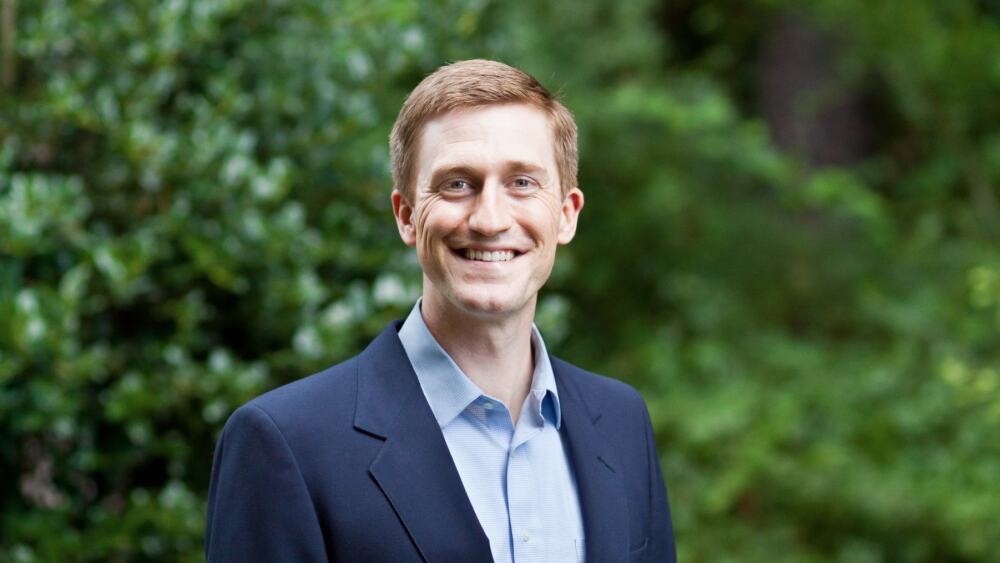As part of our new Q+A series, we were excited to chat with local developer Jed Byrne (of Capital Associates Management in Raleigh), who you may recognize from conversations on Twitter (@OakCityCRE) or from his weekly Top Five newsletter. 👋 Welcome, Jed.
Please describe what you do in the length of a Tweet (240 characters).
I work to invest in Raleigh by creating spaces for my neighbors to produce their own special brand of awesome and deliver it to the world. TL;DR — I develop commercial real estate.
How did you get involved in local commercial real estate?
My first job in real estate was with Crescent Communities, a multifamily developer based in Charlotte. We built a project in the Village District, as well as a few in Durham. I then moved to a finance role at Highwoods Properties, and now work in development with Capital Associates.
What projects are you currently working on?
I’m currently working on an adaptive reuse project. At The Junction at Five Points we are converting a warehouse into office and retail space. I’m also helping a few tenant clients find space as well as searching for my next projects.
What is the vision for the Junction?
The vision is to create a one-of-a-kind creative office environment. We are showcasing the unique architectural features of the 1950s-era warehouse, including a stunning tongue-and-groove wood ceiling, exposed steel columns, and concrete floor.
To the original structure we are adding an immense amount of natural light by cutting in 50+ windows to the exterior and adding 22 skylights. That mix of original building and natural light creates a beautiful office environment that we are really proud of. Construction began last September, and we’re slated for completion in March 2021.
What’s the biggest challenge for developers in Raleigh? And what’s the biggest benefit to building here? Developers are really in the risk mitigation business; the biggest challenge in development is always the risk involved. There is leasing risk, cost inflation risk, design + approval risk, construction risk, schedule risk, financing risk, physical risk... the list goes on and on.
A secondary challenge in Raleigh is also the biggest benefit. We are an awesome community and people want to be here. As demand increases, opportunity increases, but so does competition. Increased competition is a challenge, but also a big opportunity which hopefully leads to better projects for people in our city — resulting in better places and better spaces.
How has the city changed the most in the past 5 years? How about the past 10?
We have been on a constant growth cycle for at least the last decade. A lot of people and companies want to move here, which is good but also can create growing pains and pressures on our existing systems, infrastructure, and neighbors. I think, while growth is good and essential for a healthy community, I think we always need to make sure that we are growing intelligently, and that the burdens of growth don’t fall disproportionately on certain groups of people while the benefits accrue to others.
In the last five years, we have seen a lot of growth downtown. The most impactful project in the last five years has been Dix Park. I also think about a lot of great local restaurants and businesses popping up but also some larger developments and company relocations or expansions.
What are you most excited to see happen in our city over the next 5 years? How about the next 10?
In the next decade I am excited to see an increase in choice in Raleigh — when it comes to transportation, housing options, and development opportunities.
An increase in transportation choices means increased investment in sidewalks, bike facilities (greenways and separated bike lanes), and bus frequency. When we say “yes” to autocentric transportation, we are saying “no” to everything else.
An increase in housing options means a reduction in exclusively zoning for single-family dwellings and an increase in the infrastructure that supports this transition. Saying “yes” to exclusionary zoning for single-family dwellings means saying “no” to everything else. Our current housing development pattern is bimodal — meaning, we see a lot of new development in single-family housing and high density multifamily, but not much in the middle. “Every system is perfectly designed to get the results it gets.” By changing our system we can produce a housing mix that better reflects the demands of our neighbors and can help us achieve the goals of our community.
An increase in development opportunities means reducing the barriers to entry for the local development industry and allowing for more “missing middle” development. By increasing the opportunities for incremental development and making the development industry more inclusive, we will be able to achieve a better overall stock of new development. One of my favorite quotes is “none of us is as smart as all of us.” Right now, the percentage of the city that can participate in investment and development decisions is very small, and I think this is holding us back as a community.
And of course, transportation, housing, and development are highly intertwined, so increases in variety for each help with all three!
What is your favorite physical space in Raleigh? (Okay, we know that’s hard. Name three and why.)
I love that our downtown has maintained the original William Christmas Plan of 1792. We have a very walkable downtown grid. When I have free time or if I’m downtown for a meeting I try to take a walk (at least a few extra blocks) and enjoy the pedestrian experience. I just ramble, see the buildings, see the people, take it all in.
Another favorite place would be the North Carolina Museum of Art Park. What a fantastic resource for our community! I love going to stretch my legs while seeing beautiful sculptures and wonderful landscaping and vistas.
Another favorite spot is Two Roosters ice cream. We stop by every week, as our pandemic treat and tradition (treat-dition?) to try the new ice cream flavors. That one’s pretty self-explanatory.
Is there anything else you want our readers to know?
I am a big fan of connecting with people which has been challenging the last year. A practice I’ve tried to build over the last few years is to connect with at least one person a week that I think is an interesting person or working on something interesting here in Raleigh. If any of your readers want to connect I would encourage them to reach out on Twitter — @OakCityCRE. That’s probably the easiest way to get a hold of me.
I’ve found a huge benefit in the practice of connecting with people for no other reason than to establish a connection. It is really easy to get siloed in what I am working on or the status quo. I try to break away from that, and I encourage others to do the same.
Raleigh is such a friendly city that more often than not people are happy to connect. That openness remains even in the world of COVID-19. Practices have been modified, so I’ve met with people on the phone, virtually, and even as email pen pals. I’ve met some very fascinating people doing some awesome work in Raleigh, and they are such an inspiration.
I would love to see more people connecting and I would love to see more people reaching out to folks in town that they find interesting, and try to spark up a connection. Ideally people (myself included) will start to get outside their comfort zone and meet with folks they might not typically cross paths with. For many aspects of life, proximity builds empathy, and I think knowing people and their struggles is crucial to building connections — and a stronger Raleigh.













